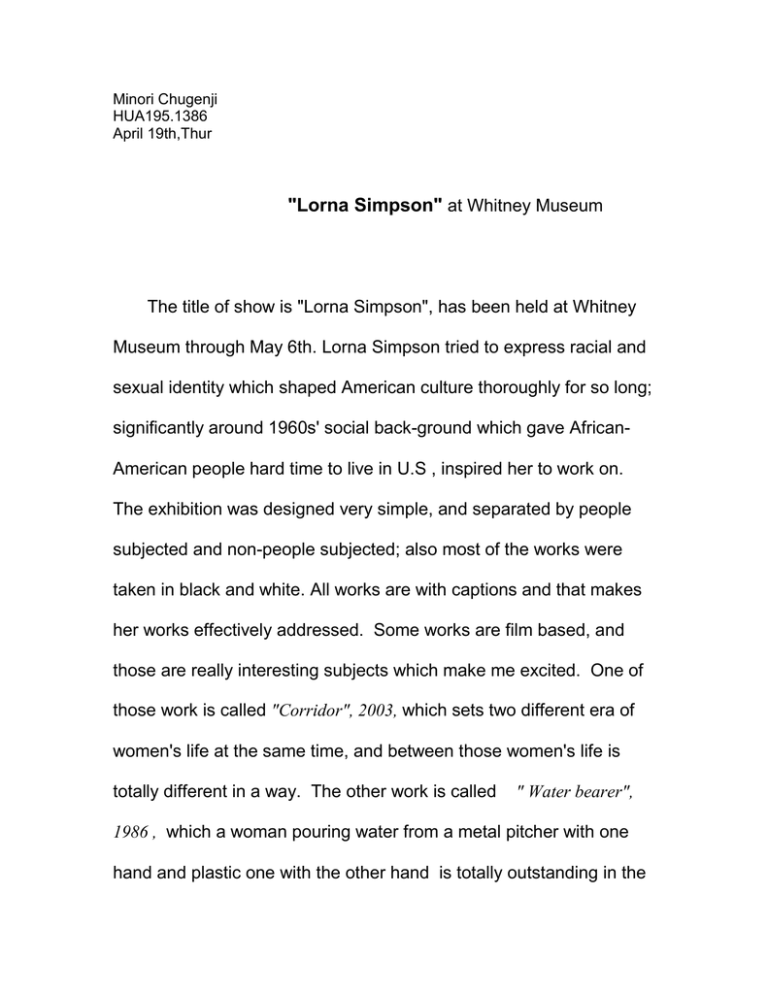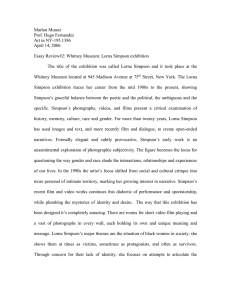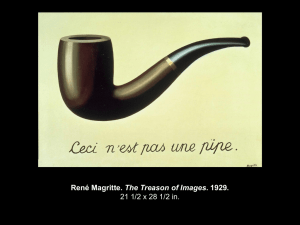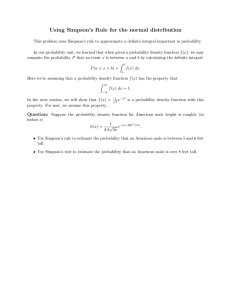"Lorna Simpson"
advertisement

Minori Chugenji HUA195.1386 April 19th,Thur "Lorna Simpson" at Whitney Museum The title of show is "Lorna Simpson", has been held at Whitney Museum through May 6th. Lorna Simpson tried to express racial and sexual identity which shaped American culture thoroughly for so long; significantly around 1960s' social back-ground which gave AfricanAmerican people hard time to live in U.S , inspired her to work on. The exhibition was designed very simple, and separated by people subjected and non-people subjected; also most of the works were taken in black and white. All works are with captions and that makes her works effectively addressed. Some works are film based, and those are really interesting subjects which make me excited. One of those work is called "Corridor", 2003, which sets two different era of women's life at the same time, and between those women's life is totally different in a way. The other work is called " Water bearer", 1986 , which a woman pouring water from a metal pitcher with one hand and plastic one with the other hand is totally outstanding in the very first beginning of this exhibition. Both works speak themselves by just the image, but also the caption and the music really helped out to make an emotional appeal to the viewers. However, What does she really want to tell us? Corridor", 2003, by Louna Simpson -Doble-projection video installation video transfered to DVD, sound ( Reve Charmantl ,1881) and Battle of Manassas [1866] by Thomas Wiggins know poplarly as Blind Tom performed by pianist John Davis from John Davis plays Blind Tom Newport Classic [1999] : 13:45 min courtesy the artist. One of the works from the exhibition," Corridor", 2003 , which is described by two women's ordinal life in parallel. The film took place at a coffin house in Massachusetts. One is apparently from household servant in 1860, the other one is a homeowner who looks like making a good living in 1960s. For both time period, each music comes in Jazz and Classic at the same time. The story is very simple, even I am not sure there is a story or not. Especially the one from 1960, thoroughly the woman is just doing the things what most of servants do in a day, cleaning, washing, and after the work she begun to write something. All over I felt that there were calmness and peacefulness. It looked like she found out inner peace even though she had to work everyday as a servant. On the other hand, the other women who is from 1960 is also doing what people do in a day, but there is a little story. The film started a scene that she is looking at a mirror. In spite of her living such a big house by herself, or might be with somebody else, she looks somehow lonely. Through the film, she had been waiting somebody to have dinner with her. Though she called somebody, or got a call from somebody, she does not look happy anyway. From her gorgeous appearance it was sort of anniversary or something, but nobody is coming. She is supposed to be happier than the woman from 1860, but looks like she is just lonely, and there is some sense of emptiness. Rather the woman who is from 1860, looks like living very calmly and full of peacefulness which most of people preciously cherish to live happily for good. It is the most important thing that we can never get from money or reputation. I think Ms. Simpson tried to describe the concept through this work, "Corridor". "water bearer", 1986, by Lorna simpson Gelatin silver print and vinyl lettering collection of Seab and Mary, Kelly, New York. The other work called "Water-bearer", 1986 is stood apart in the very first beginning of the exhibition. A young woman is facing away from us, holding a metal pitcher with one hand, pouring water from a plastic container with the other hand. The woman is Wearing a white loose strip dress, and the caption said: "She saw him disappear by the river, they asked her to tell what happened, only to discount her memory. " I don' t know what background is hidden in this work, but something happened. Thoroughly her entire works, she wanted to focus on : race, a politic fact, and sociological fantasy that has shaped American culture. From that point of view, at least this photograph represents a problem about race, especially the color of photograph always speaking about the color of the race for me: black and white. All over, I actually really like her works. Everything is independent, but at the end, all works coming in together. The piece of work does not look related to each other, but it does. I felt like that I had been picking up her thought and passion against the world, not in general but her own. Why I felt like that was she would have had such a thought and passion to describe them as photographs thoroughly for few decades. The strong passion to express as works would connect those all works one to one. Moreover, in a way I like her works because she never tried to look them very organized and put too much decoration on the photographs. Everything is very simple, rather that those are completely left out that were not needed. Therefore her photographs are so striking in order to tell what she want to tell, and the captions adding more stories in them: then finally those are totally organized, such a powerful accomplishment for past 20-years.


